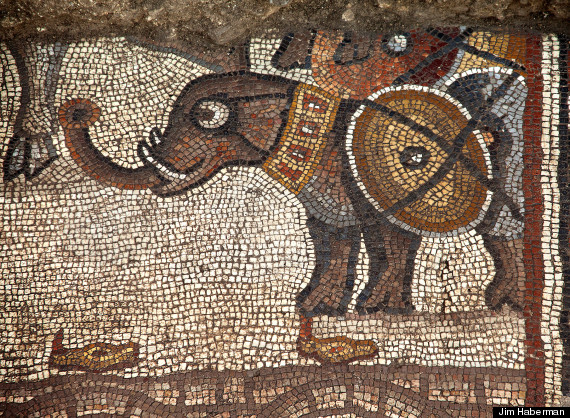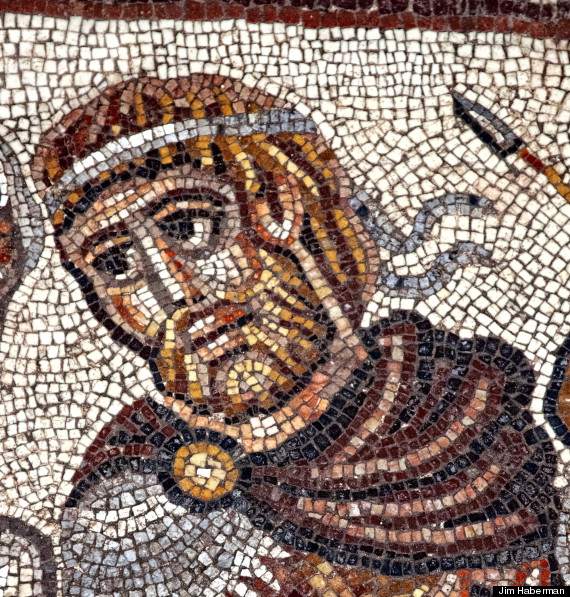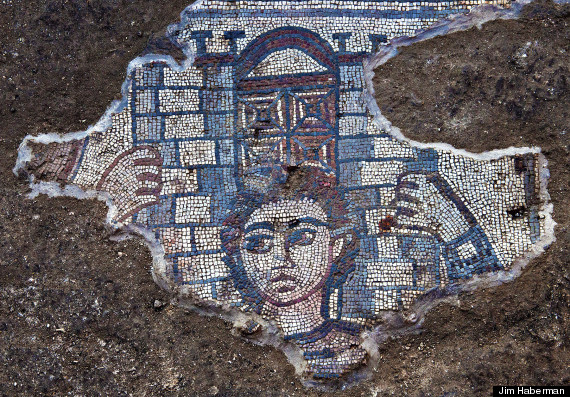Save This for Me...
Articles of Interest in the Studies of Occultism
Summer 2014
Articles of Interest in the Studies of Occultism
- Christ Transformed into a Virgin Woman. Lucia Brocadelli, Heinrich Institoris, and the Defense of Faith
- Samsung Finds Evidence of Child Labor at Chinese Supplier South Korean Electronics Giant Halts Business With Shinyang Electronics Co.
- Book review: Ancient Persian Goddess and Zoroastrian Yazata
- Elephant Mosaic In 5th Century Synagogue Uncovered
- Crown of the Continent. Glacier National Park, Montana
Summer 2014
Christ Transformed into a Virgin Woman. Lucia Brocadelli, Heinrich Institoris, and the Defense of Faith by Tamar Herzig (review)
From: Magic, Ritual, and Witchcraft
Volume 9, Number 1, Summer 2014
pp. 90-93 | 10.1353/mrw.2014.0000
Volume 9, Number 1, Summer 2014
pp. 90-93 | 10.1353/mrw.2014.0000
In lieu of an abstract, here is a brief excerpt of the content:
We know that toward the end of the Middle Ages there was a general rise in interest in female supernatural experiences, whether viewed in a positive or a negative light. Notions of both sanctity and wickedness congealed around specific models, giving rise to figures of both saints and witches. The former—the saintly women that Gabriella Zarri has called ‘‘sante vive’’ (living saints)—were female mystics venerated during their lifetime. They became increasingly important in shaping peculiar, if contested, models of sanctity in Italy in the age of princely courts.
Tamar Herzig’s Christ Transformed into a Virgin Woman offers, from this point of view, an intriguing insight into a much broader cultural field than may be grasped from the title alone. The nine-page pamphlet titledStigmifere virginis Lucie de Narnia aliarumque spiritualium personarum feminei sexus facta admiracione digna (Deeds of the Stigmatic Virgin Lucia of Narni and of Other Spiritual Persons of the Female Sex that are Worthy of Admiration), published by the (in)famous Dominican inquisitor Heinrich Kramer (Henricus Institoris) in Olomuc, Moravia, in 1501, promoted the famed sanctity of contemporary Dominican tertiaries Lucia Brocadelli of Narni (d. 1544), Stefana Quinzani (d. 1530), and Colomba of Rieti (d. 1501). This pamphlet lays out a varied and rich itinerary, centered on the role of a precise type of female spirituality that, in the view of the Dominican friar, can serve to defend the faith against several types of threats.
Herzig explains that this German inquisitor, who was primarily known as a witch-hunter, held a clashing set of attitudes toward women—an ambivalence shared by some of his fellow friars. Kramer, whose attacks on witches in the Malleus Maleficarum (1486) have often been interpreted as a manifestation of his overall fear of women, appears otherwise to be a great admirer of female mystical saints, so much so that he became one of the major contributors to the spread of their veneration beyond Italy. Herzig reconstructs his consideration of female supernatural appeal through the analysis of some of his major works, with the focus on how his perception of the female aptitude inclined either to diabolic flatteries or to divine revelation.
Chapter 1 lays out a detailed exposition of Kramer’s life, orientation, and historical and religious backgrounds. In Chapter 2, Herzig focuses on Kramer’s take on witchcraft, heresy, and narratives pertaining to piety and desecration of the Eucharist. The image of witchcraft as a predominantly female, ‘‘new’’ type of heresy, particularly oriented toward producing bewitchment, is well exemplified by theMalleus maleficarum, and is constructed in opposition to a version of doctrinal heterodoxy that, in Kramer’s view, is markedly male in character. The appointment of Kramer as papal inquisitor in 1500, primarily to prosecute Hussite sects in the Kingdom of Bohemia, led to his fascinating promotion of the charismatic type of embodied female spirituality, with a number of publications issued there in that regard. In Chapter 3, Herzig reconstructs the ties that Kramer established not long before with Lucia Brocadelli, whose fame as a revived St. Catherine was spreading fast. The Eucharistic raptures and ecstasies of the those Italian holy women, and especially the stigmata that Brocadelli received while she was in front of a crucifix reliving the suffering of Christ’s Passion, are frequently put forward by Kramer against the Moravian Hussites as proofs of Roman Catholic doctrines. What is more, Kramer also had to defend somatic female spirituality from the opposition not only of the Franciscans, who clearly wanted to preserve the uniqueness of St. Francis’s divine gifts, but even from the doubts of his own fellow friars of the German Observant Dominican congregation as well as from Girolamo Savonarola. Chapter 4 sets out to explain the different points of view from which the spirituality of the sante vive could be promoted for the benefit of Christendom. Herzig argues that Kramer’s Sancte Romane ecclesie fidei defensionis clippeum adversus Waldensium seu Pikardorum heresim (1501), published in Olomuc a few months before theStigmifere, opposes the genuine sanctity of the sante vive to the feigned holiness of male Hussite heretics. Also, Lucia Brocadelli appears in the Clippeum, with her bleeding wounds as the embodiment...

7/16/2014
Samsung Finds Evidence of Child Labor at Chinese Supplier South Korean Electronics Giant Halts Business With Shinyang Electronics Co.
By MIN-JEONG LEE
SEOUL—Samsung Electronics Co. said Monday it is temporarily halting business with a supplier in China because a company investigation indicates the supplier used child labor.
Last week, nonprofit labor group China Labor Watch accused the South Korean company of overlooking the use of child labor at supplier Shinyang Electronics Co., which makes cellphone covers and parts for Samsung in Dongguan, China. China Labor Watch, based in New...
````````````````````````````````````````````````
February 18, 2014
Book review: Ancient Persian Goddess and Zoroastrian Yazata
A review of the book: Anahita - Ancient Persian Goddess and Zoroastrian Yazata (Paper and Kindle details)
Book Review by Terry Graham (review produced here with kind permission).
Book Review by Terry Graham (review produced here with kind permission).
A compendium of material on the archetypal figure of Anahita is testimony to the work of Payam Nabarz, editor of the Mithras Reader, devoted to the ancient Iranian primal male archetype. Anahita: Ancient Persian Goddess and Zoroastrian Yazata is a rich compendium of articles examining this figure from diverse points of view: mythological, spiritual, academic, aesthetic, historical, ethnic and psychological.
Amongst the many articles of value two papers stand out in providing fundamental factual and academic information on the background of Anahita. One is the piece by Sam Kerr, entitled An-Åhitvm Purity by Sam Kerr (sole error in this sound treatment: long '•' in the title name). The importance of this article lies in analysis of the meaning of the concept upon which the archetype of Anahita as deity is based. Analyzing the etymology of the name in the Indo-Iranian context of Sanskrit, Kerr shows how the archetype of the feminine as representation of purity developed, while the second key article, by Israel Campos Méndez, on the incorporation of Anahita with Mithra into the Achaemenian political ideology, shows how this pre-Zoroaster goddess concept became merged with the mother goddess figure of the Middle East.
In demonstrating the obsessive involvement with ritual purity and chastity which grrew around the Anahita cult, Kerr gives us a solid background for understanding why the Iranian prophet Zoroaster, founder of the Mazdean religion, rejected the archetype in his religious reform, focusing the worship solely on the Supreme Deity, Ahura Mazda, as he conceived the Godhead, much like the Yahweh coming from Moses and the Allah from Muhammad. As to why Artaxerxes II, the Achaemenian shah, brought her back into the pantheon of worship, along with her male counterpart Mithra, 150 years after Cyrus and Darius established Zoroaster's monotheism as the reigning faith of their empire, we must turn to the article by Campos Méndez on the Achaemenian rock inscriptions.
Despite his generally sound thesis, the author begins in a misleading way, suggesting polytheistic corruption in the Achaemenian ideology. In fact, as he very effectively proves, there was no enunciation of any polytheistic nature until 150 years after Cyrus II the Great founded the empire in 559 BCE. It could well be argued that Artaxerxes II (405-359) and his succesor Artaxerxes III (359-338) brought the two figures into the pantheon to form a trinity for purely political reasons, rather than as a matter of faith. As Campos Méndez recounts, the inscriptions served as «an important propaganda work» (p. 41).
The politics of bringing Anahita into the picture along with Mithra served to appeal to the regions in which the mother goddess figure was resonant, as with Cybele in Anatolia and the eastern Mediterranean litoral, along with the Sumerian Inannu and Babylonian Ishtar in Mesopotamia.
With no validity for the commonly held view that this is the thin edge of creeping polytheism into the Achemaenian state religion, the real danger actually lay in the theology of the mubads, the Mazdean priests, who, like clerical dogmatists in every faith, made innovations of their own, beginning with the dualistic concept of an evil god pitted against Ahura Mazda and carrying on with the addition of other deities, called 'yazatas' (literally, 'godlets'), including some of the old Aryan ones which Zoroaster had scrapped.
There was great economy in the inclusion of Anahita and Mithra, in that they had arehetypal power far beyond that of the other gods. There is no sense of any compromise towards the polytheisms of Greeks, Romans, Egyptians and other peoples under Persian rule. In fact, inscriptions citing the pair occur strictly under the two aforementioned shahs, after whom they disappear. So the Achaemenians clearly remained purer in their monotheism than the theologians of the future state religion of the Sasanian empire (224-642 CE).
In his introduction, despite his all-embracing survey of the impact of the figure of Anahita in the Iranianate world, even Nabarz falls prey to the mubads' misconception, if not deliberate distortion, confusing Ahura Mazda with His prime creation, Spenta Mainyu, the Holy Spirit, as chief of the seven Amesha Spentas, the Holy Immortals. He presents a graph of the mubads' pantheon, where Ahura Mazda is reduced to the level of the illustrious Immortals, the archetyal forms serving much like the Names and Attributes of Allah in Islam, thus debasing the Supreme Deity to a position vulnerable to challenge by an 'anti-god'.
The compendium comprises articles and graphics providing a wide variety of perspectives on the goddess, showing her power in the psyche as the eternal feminine. The great demonstrator of the interrelationship between ancient Iranian and Chinese and Japanese culture, Masato Tøjø, ananlyzes a water ritual in Mahayana Buddhism, while an Iranian archeological team gives an illustrated study of Sasanian rock reliefs attributed to Anahita. The goddess is depicted both as object of adoration in ancient art and as subject of inspired artwork by present-day aficionados.
Kaveh Farrokh's discussion of the possible connection between Anahita and the Lady of the Lake in Arthurian legend serves as departure point for an illuminating comparison of Iranian and Celtic spiritual culture, arising from a common origin as sub-group in the Aryan ethno-linguistic tradition.
Amply illustrated, this compendium effectively presents its theme of the ancient world's most well-rounded ideal of the feminine archetype. Where other folk divided the feminine into many aspects, fragmenting the possibilities of womanhood into the diversity of a multitude of goddesses (say, amongst the Greeks: Hera for queenship, Athena wisdom, Demeter nurture, Aphrodite beauty, Artemis provision gathering, Hestia domesticity, etc.), the Iranians are shown to have subsumed all the feminine qualities into virtually a sole Godhead in female form.

````````````````````````````````````````````````
08/09/2014
Elephant Mosaic In 5th Century Synagogue Uncovered
At the top of the panel there are two large, bearded male figures depicted in the center. One is a Greek military commander and ruler, which Magness said is indicated by his elaborate military attire, purple cloak and corded diadem, leading a bull by the horns. The other is an elderly bearded man -- apparently the same one depicted in the middle scene. To the left of the elderly man are young men in white tunics and mantles, as in the middle section. To the right of the commander is a row of soldiers and, surprisingly, battle elephants with shields tied to their sides.

Because there are no stories from the Hebrew Bible involving elephants, Magness said, her team deemed the entire mosaic, which has been removed from the field for conservation, to be representative of a non-biblical story. The question is, what storywas it depicting?
Though Magness said she could not yet speculate on the mosaic's meaning, she did offer some suggestions.
"The possibilities that we are considering include that this panel depicts the meeting between Alexander the Great and the Jewish high priest (a legend told in different versions by the ancient Jewish historian Flavius Josephus and in rabbinic literature), or that it depicts a story based on the Maccabean martyrdom traditions," Magness told HuffPost by email.

The Greek military commander and ruler.
Whatever the mosaic's significance, Magness said the experience of seeing it for the first time was a highlight of her career. Orna Cohen, the site conservator, did the final work of uncovering the floor while the rest of the team looked on incredulously.
"We knew we were coming down on a mosaic because we had found other mosaics nearby at the same level," Magness told HuffPost. "However, we did not know to what extent the mosaics were preserved, or what their content was. I gathered all of the staff and students that morning, and we stood around watching as Orna slowly and carefully cleaned the mosaic, bringing to light these images for the first time in 1600 years. It was amazing!"
Magness' team had encountered biblical scenes every summer preceding 2014, but even those were by no means generic, Magness said. First was Samson and the foxes, recounted in Judges 15:4, in which Samson takes revenge on the Philistines by using 300 paired foxes with lighted torches between their tails to burn down the agricultural fields of the Philistines. The other depicts Samson carrying the gate of Gaza, described in Judges 16:1-3. After visiting Gaza to sleep with a prostitute, Samson discovers that the townspeople have planned to attack him, but he fools them by pulling up the gate of Gaza and putting it on his shoulders as he walks towards Hebron.

Samson carrying the gate of Gaza.
Few decorations on ancient synagogues depict scenes with Samson -- in fact Magness said that so far only one other in Israel has been found with such a scene. Given that Jews in the 5th century were living under Byzantine Christian rule, Magness said, these congregations may have been looking for a messiah figure.
"We believe that these Jewish congregations may have viewed Samson as a prototype of a messianic figure - a mighty warrior and redeemer who did great deeds on behalf of Israel," Magness told HuffPost. "In other words, these congregations might have thought that the future messiah will be a Samson-like figure."
````````````````````````````````````````````````
Montana
Photo below...
````````````````````````````````````````````````
08/2013
Great American Outdoors
Photo: Kim Hang Dessoliers
Montana
Crown of the Continent
Come and experience Glacier's pristine forests, alpine meadows, rugged mountains, and spectacular lakes. With over 700 miles of trails, Glacier is a hiker's paradise for adventurous visitors seeking wilderness and solitude. Relive the days of old through historic chalets, lodges, transportation, and stories of Native Americans. Explore Glacier National Park and discover what awaits you.
http://www.nps.gov/glac/index.htm
Photo below...

Further Information...link
````````````````````````````````````````````````
